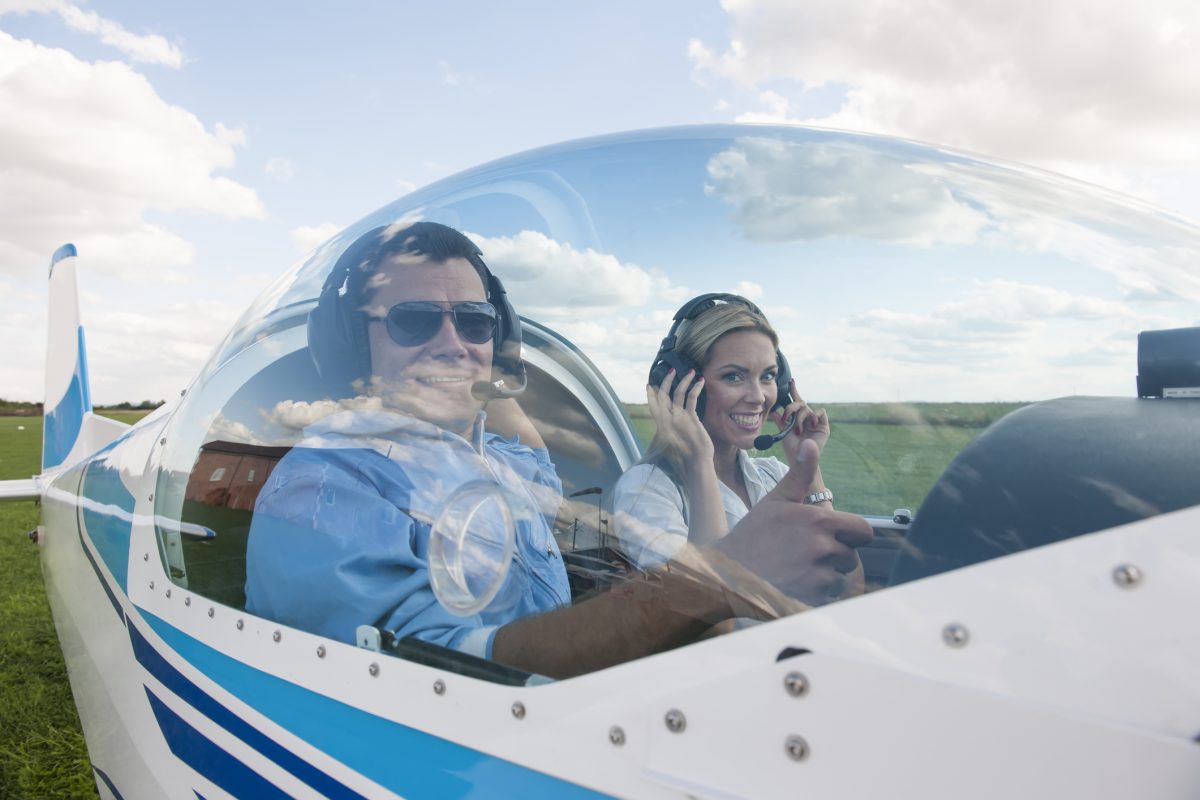
One of the best parts about becoming a general aviation pilot is sharing the joy of flying with friends, family, or loved ones. Not only is it fun to fly together, but a reliable cockpit companion can also be an important advocate for flight safety. In the unlikely event that a passenger needs to take the controls, having a solid foundation of aviation knowledge and basic skills may even prevent disaster. In this series, we’ll discuss ways flying companions can take a more proactive role in promoting safety during flight. First, we’ll share a few ways passengers can help pilots manage flight duties from the right seat.
Practice navigation skills
As a non-pilot flying companion, understanding the ins and outs of the aircraft’s navigation systems is one of the easiest ways to assist the pilot-in-command. In addition to knowing the basic functions of navigation instruments and learning how to read paper charts, passengers can also learn to use navigation apps or the panel-mounted moving map display to help the pilot track the progress of the flight. At the very least, passengers should know how to set a moving map to locate the nearest airport in the event of an emergency.
Help assess risk
Flying companions can play an essential role in helping pilots assess, manage, and mitigate the risks associated with flying. A good place to start is by understanding how to use the “PAVE” tool to assess risk throughout every stage of flight. PAVE stands for:
Pilot/People: When evaluating flight readiness, pilots should be aware of the personal risks they bring to the table, which include factors like health, experience, proficiency, and legal requirements, along with physical health and emotional factors. Because it’s not always easy to do an honest assessment of our own physical and emotional states, passengers can help pilots determine if they’re truly fit to fly.
Aircraft: Pilots must also evaluate the condition of the aircraft they’re about to fly. Passengers can help pilots run through checklists, check fluids, and monitor gauges.
enVironment: Risk factors of the flight environment include airport and runway conditions, terrain, obstacles, airspace restrictions, traffic, and of course, weather conditions.
External pressures: Whether it’s the pressure from other passengers to get to a destination on time or a case of “get-home-itis,” pilots and their flying companions should be aware of external pressures that may lead to poor decision-making.
Flying companions can also help pilots manage risk by providing an objective perspective on the “go/no-go” decision. As a passenger, if any aspect of the flight makes you uncomfortable, don’t be afraid to speak up. Voicing your concerns may help save lives.
Learn how to speak (and listen) like a pilot
Another way to help pilots reduce their workload during flight is by helping with radio communications. As a regular GA aircraft passenger, pay attention to the way pilots and controllers communicate and listen for key words and phrases. You’ll see that pilots follow a specific structure when making radio transmissions that helps ensure clear communication. Passengers can study pilot lingo by reading the Pilot/Controller Glossary and practice their listening skills by tuning into control towers using an app like LiveATC. At a minimum, passengers should learn how to tune the radio and know how to declare an emergency.
Every flight is an opportunity for pilots and passengers to work together to improve cockpit flow and manage risk. If you’re the pilot, take time to teach your flying companions some basic skills and answer their questions. If you’re a passenger, don’t be afraid to ask plenty of questions and pay attention to what the pilot is doing at each stage of flight. You can learn a lot through observation alone!
Do you have any other tips for flying companions? Let us know on social media @HartzellProp. Stay tuned for the next part in our series, which will focus on ways flying companions can assist pilots during preflight.